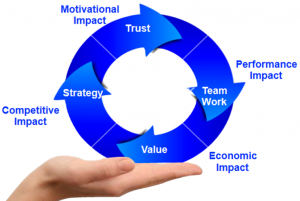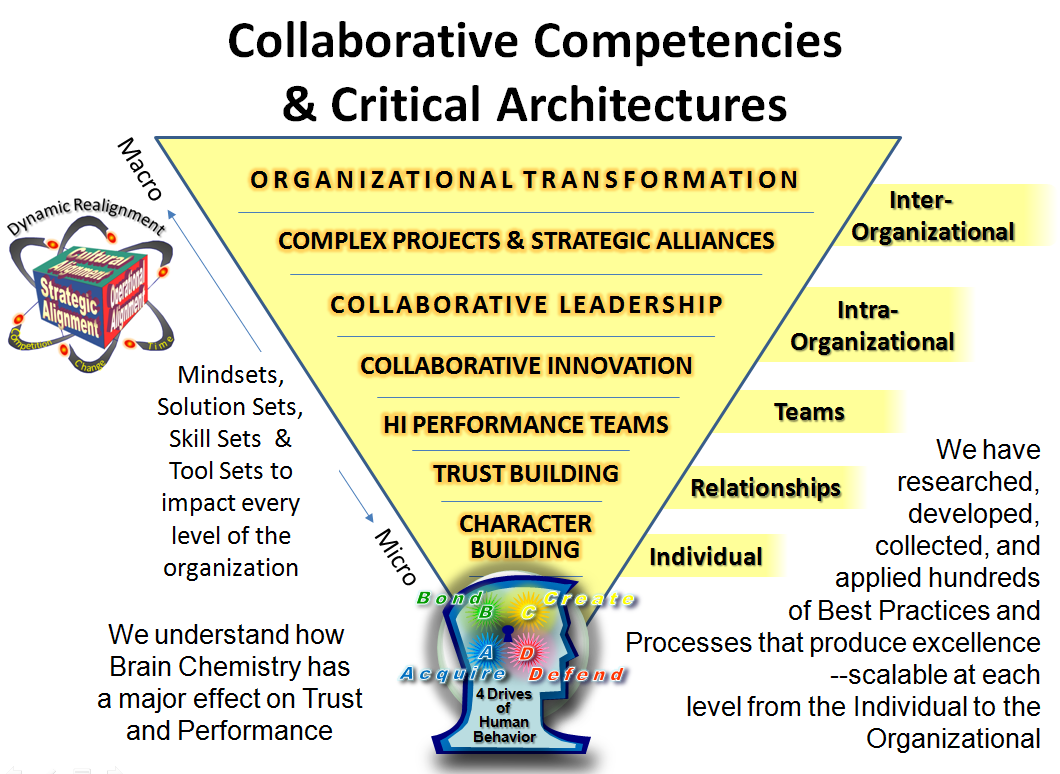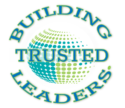Because of the independent departmental structure of business schools, there is seldom any integration, alignment, or unity of strategy regarding leadership. This fragmentation prevents one course to be successfully linked to another. Nor is there a coherent framework for understanding human behavior, which drives business schools into the realm of “managing things and processes,” not “leading people and teams,” which is so vital in today’s world.
Thus, too often students leave business school with a muddled view of leadership, thinking of it as a bizarre concoction of management skills:
- Adversarial strategies of Genghis Khan,
- Authoritarian command of John Wayne.
- Transactional Wall Street deal-making, and the aphorisms sports coaches or the entertaining stories that are memorable but not tied to best practice.

In this confusion, the essence and core of great leadership gets lost. This is one of the reasons why so many leadership programs are ineffective -- they create “muddled” leaders. We help sort through the confusion and ambiguity, creating collaborative leaders, which is the fulcrum for all gains in collaborative advantage.
Scalable Framework
What gives real power to our approach is how our “core architectures” have been arrayed to span from “internal factors” at the individual level (such as brain chemistry and character development) and then scale increasingly larger: to relationships, trust, teamwork, collaborative innovation, complex projects, alliances, organizational transformation and value networks.

What is learned at a lower level on this inverted pyramid can be used as the step-stone for the next level, making it easier for learning to build upon itself.
The next four points address how the Four Drives of Human Behavior are aligned, balanced and integrated to create Character, Teamwork, and Trust:


A key underpinning of the Institute is the powerful 4-Drive framework of human behavior developed by Professor Paul R. Lawrence of Harvard Business School, and refined by colleague Robert Porter Lynch into a highly useful model for trust-building in teams and alliances. The four drives: Acquire, Bond, Create, and Defend (A, B, C, D) are easy to understand and use. These Four Drives have a strong basis in brain chemistry and enable us to explain how leaders build character and develop trust.
The Four Drives relate directly to key factors in how leaders balance, align, and integrate the drives to Acquire, Bond, Create, & Defend. Imbalances and misalignments will produce diminished performance.
The structure and strength of trust will be dependent upon a leader’s ability to configure the organization’s culture to bring out the highest alignment (synergy) between the four drives.
"Character becomes Destiny" -- Heraclitus (500 BC)

Without strong character, leaders will imbue their organizations with the wrong values, warped belief systems, ineffective rewards, and a muddled culture that will produce mediocre results at best. Great leaders are imbued with good character: a person’s distinctive traits, qualities, and behaviors that embrace the realms of:
- Mission, Purpose & Direction
- Ability to Respond to Adversity & Challenges, Courage
- Learning, Innovation, Adaptability
- Trustworthiness & Respect Values & Moral Choices (caring),
- Beliefs, Attitudes, Discipline & Commitments,
When these qualities are developed, honed, and then aligned, balanced, and integrated, leaders become highly effective. It is our aim to build leaders with character that are able to create organizational cultures that are productive, innovative, and retain excellent people.
Character is to a Leader as Culture is to an Organization.
A Leader’s character will soon manifest as the underlying Organizational Culture that will impact every dimension of personal and team performance.
A leader’s character will manifest as the organization’s culture – good or bad; the culture will determine performance. Studies show that about 2/3 (or more) of all human behavior is determined by organizational "culture" than any other factor; the other 1/3 is determined by personality and past experience.
Organizational culture is comprised of the belief systems, vision, values, operating norms, measures, rewards, and punishments embedded in the way things are done. Leaders generate culture – primarily from their own character.
Good character produces good culture which produces good results, and poor character thus produces poor results.
Character, and the culture it generates has a major impact on productivity, removal of non-value added work, employee retention, and profitability.

Without a strong foundation of trust, leaders are not capable of triggering the collaborative energy that creates high performance teams, nor are leaders able to empower the collaborative innovation that enables rapid adaptation to change.
Trust determines .......
the Course of History, the Destiny of Nations, and the Fate of People.
Paul R. Lawrence, Harvard Business School, 2009
Our highly acclaimed “trust architecture” is the basis for high performance teamwork, collaborative innovation, and trusted leadership. This is attributable to the breakthroughs we found in brain chemistry, and the development of the Ladder of Trust (tm), the FARTHEST Principles (tm) and the strategy to defeat untrustworthy people
Understanding baseline trust levels in an organization is critical to developing high performance teams.
We use a diagnostic data-driven survey to establish a trust-baseline (developed jointly by Professor Paul Lawrence and Robert Porter Lynch). This sets the foundation for the Trust’s Impact on Profits(TM) Analysis. Typically a 10% improvement in trust will be perceived by the workforce as comparable to a 40% improvement in wellbeing, thus contributing dramatically to productivity, engagement, retention, and profitability.

Because over two-thirds of of all workers are involved in teams, alliances, and cross-boundary relationships, any leaders must master the art of creating high performance teams. And the biggest impediment to teamwork is distrust; thus the requirement for a powerful trust underpinning to activate great teams.
High performance teams have more breakdowns than low performance teams. The critical distinction is how the high performance team transforms breakdowns into breakthroughs. We know how to predict 85% of the breakdowns in advance.
High performance teams have seven characteristics that can be replicated and are build into the structure of the team-building process:
- Competence
- Character
- Co-Creation
- Championing
- Caring
- Collaboration
- Commitment

Capitalism is a major agent of change as competitors challenge each other to improve continually. This is known as creative destruction. The only way to stay competitive is to collaborate internally to compete externally.
Our breakthrough discoveries about innovation are trust-based, which enables people to put aside their need to defend themselves and challenge each other to engage in breakthrough thinking. We have discerned and codified the most the powerful and effective best practices leaders have employed around that have been the
This enables rapid elimination in non-value added work, major increases in productivity, and innovation flows generated across boundaries.

In our integrated leadership approach, we teach the leadership processes as a set of competencies involving Four Key “Alignments:”
- strategy and vision that underpins mission and purpose,
- character and culture that builds trust and teamwork,
- operational excellence that comes from coordination across functions, and
- rapid innovation and adaptation to change and competitive incursions.
Leaders are constantly faced with aligning, balancing, and integrating these four dimensions. All our programs focus on some aspect of these four alignments.

For the last 30 years we have unearthed the most highest impact best practices in strategic alliances, and cross-boundary collaborations. These practices, pioneered by Co-Founder Robert Porter Lynch, form the backbone of thousands of successful alliances around the world. The shift from stand-alone organizations to integrated supply chains to fastime value networks is highly dependent on the excellence of strategic alliance leadership and best practice. The alliance best practice methodology is the foundation of highly functional eco-systems.
The strategic alliance framework enables collaborative leaders to use the differences in organizational strengths to produce a 1+1>3 result. The processes and frameworks enable high performance teams to function between organizations, to engage in complex project roll-outs, develop new technologies, enter new markets and create value chain competitiveness.

Value Maximization is "system design architecture" that acts as a guiding star on a boundless strategic sea of value creation and value addition options. Value Maximization is more than a rigorous set of analytic tools and actionable practices. It is a strategic architecture and thus a genuine discipline that enables leaders to navigate a competitive course in both good and bad times, to talk to their entire organization with a common, universal framework that every new initiative, project, program, alliance, and team can use to communicate its vision, strategy, and course of action. However, to enact Value Maximization to its fullest extent without having a full range of leadership skillsets, especially Collaborative Leadership.
A design system architecture must not only be the navigational system to give direction, but also serve as the guidance system to weave through the chaos and turmoil that is in the path of every leader. With a design architecture in place, we are convinced leaders and managers will be able to mobilize people, commit assets, build alliances, and generate value that flows end-to-end from suppliers into one’s own organization, and through to customers.
Based on our years of experience, we believe Value Maximization will improve top line and bottom line performance at least 20%.

Leadership Training is not just in the Head
Transforming Key Success Factors into Concrete Applications
We recognize that much of leadership training cannot be done solely as an academic exercise, because it can only be exercised in the heat of a real challenge – in the crucible of action and the tension of emotions.
Our programs focus on integrating frameworks/architectures with success factors, tools, coupled with a heavy dose of application.
For this reason, we do not rely heavily on case studies, but instead use the pressure cooker of real life situations, simulations, and interactive games.
In both our Youth training and Executive capability building, we ensure that every principle or success factor can be distilled into a usable “best practice,” to which we provide a set of “tools” (questions, frameworks, diagnostics, etc.) that then are applied to real life situations. We know that when people are able to apply something immediately, they retain 80% of what they learned three weeks later; but if they can’t apply it, their retention plummets to 20% or less three weeks later.
Thought Leader plus Senior Executive “Tandem Delivery”
For Executive Programs, we team two top notch people to present programs:
- Thought Leader -- most advanced thinking (typically a “pracademic” who spent many earlier years in the field then wrote a book then began training executive later in their career).
- Senior Executive -- best wisdom of experience (typically a very seasoned leader who has had a wide variety of organizational experiences, and has seen both success and failure, and knows the difference.)
Critical Mass
We have learned, typically the hard way, how difficult it is to send one person to a program, have them return, and then face the disappointing challenge of having the “corporate immunal reject response” kick in where the corporate culture kicks out the person with the new ideas because they look like a “foreign body.” Thus we encourage teams to come to our sessions, plan their actions together, and then reenter their parent organizations as a critical mass that can effect improvements.
Follow-up Coaching & Project Commitments
It is often not enough for business leaders to learn, develop new skills, and create action plans during a session. We know it is often valuable upon “re-entry” to have a mentor from the Institute to be available to coach when necessary and also for the participants to develop a concrete plan that will deliver measurable impacts -- either to top-line, bottom-line, innovation on flow, removal of non-value added work, sustainable cost reductions, or something similar that will validate the return on investment from leadership capability building.
Simulations & War Gaming
When appropriate we have created competitive “war games” for clients and had excellent luck in competitive-collaborative computer simulations in the past, and can use these when appropriate in the Institute.
